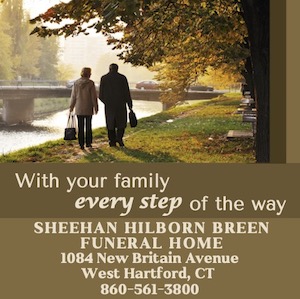
Paris says that he may be the only "Jewish chip-carver," combining his Judaism with his hobby.
Harvey Paris of Bridgeport knew he needed to find a hobby when his wife decided to enroll as a rabbinical student at the Academy for Jewish Religion in 2006.
“We realized that I’d have 20 hours of downtime a week while Barbara did her homework,” he says. “But it had to be a quiet hobby.”
The husband and wife serve as president and vice president, respectively, of Jewish Family Service in Bridgeport.
“I first thought of Murano glass, which we’d seen in Venice; it knocks your socks off,” Paris says. “But I wanted to do it in the empty bedroom that used to be the kids’, but the idea of molten glass in the bedroom… so that got nixed.”
After exploring several wood-carving techniques, Paris chose chip-carving for its simplicity. “I didn’t want to set up a workshop with 5,000 tools,” he says. “Chip-carving requires one hand-held knife, and you can do it while sitting on a chair in the bedroom.”
The decorative art can be traced back to the 12th century, with examples throughout Europe ranging from ceremonial tool handles to architectural components. Using a small knife or chisel, the artisan creates designs and patterns by removing chips from a wooden element. Softer woods are favored; in the U.S., bass and butternut are often used.
While researching the craft online, Paris discovered Illinois-based Wayne Barton, recognized among the premier carvers in the U.S. and throughout the world. He registered for a two-day class, and still studies twice a year with Barton.
“At that first class, Wayne told us, ‘By the power vested in me, I now declare you all artists,’” Paris recalls. “I took those words literally to my heart and have lived every day as an artist ever since then.”
Paris began with a simple project, a traditional four-inch-by-eight-inch “welcome board” often hung in the entrance of a home. He used the traditional American motifs of an acorn and a maple leaf. But then he wanted to make the piece Jewish, Paris says, “so I thought, ‘What’s good Jewish vegetation?’ Deuteronomy is full of examples.” Thus was born a series of “Shalom boards,” each carved with the word “peace” in a different language, and each adorned with one of the seven species listed in the Torah. Paris concluded the project by carving a plate he titled “The Seven Species of Peace and Promise.”

Tzedakah Box carved by Harvey Paris
Paris says that he may be the only “Jewish chip-carver,” combining his Judaism with his hobby. “It gets me in touch with the creative part of me, but it also became a Jewish hobby in the way that my soul expresses itself,” he says. He has created etrog boxes and tzedakah boxes, donating 25 percent of sales proceeds to Jewish Family Service and carving items for fundraisers. One of his etrog boxes was included in the 2008 Fairfield Museum and History Center exhibition, “Celebrating Our Jewish Community.”
Paris gets inspiration for his original designs from Jewish paper cuts, a popular art form dating back to the 14th century that used symbols and concepts from Torah and Talmud. He works in motifs like the Tree of Life and its keter, or crown, pillars, and animals, each of which has both a literal and mystical meaning in Jewish tradition.
“People question whether ‘Jewish art’ exists, because you can’t represent God,” he says. “But there always has been; you see beautiful examples on synagogue bimahs and even on headstones. By carving ritual items, I’m making this ancient craft relevant to today.”
Paris is now working on a memorial plaque incorporating a keter flanked by lions. “With every piece I make, I’m trying to incorporate Judaic imagery that I haven’t used before,” he says. “There’s such a rich Judaic history that I’m bringing to my work.”
Paris has also learned to be patient with wood, a difficult medium that can trick a carver with an unexpected twist of its grain below the surface. Like many carvers, he keeps a bottle of glue handy. He expects to see his range and self-concept as an artist continue to evolve: “After all, Barbara has two or three more years before ordination,” he says.








 Southern New England Jewish Ledger
Southern New England Jewish Ledger









